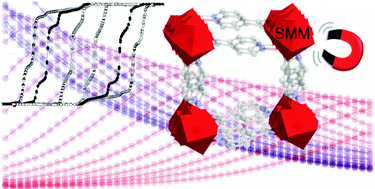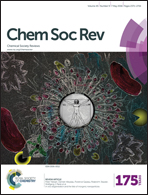Constraining the coordination geometries of lanthanide centers and magnetic building blocks in frameworks: a new strategy for molecular nanomagnets†
Abstract
Single-molecule magnets (SMMs) and single-chain magnets (SCMs), also known as molecular nanomagnets, are molecular species of nanoscale proportions with the potential for high information storage density and spintronics applications. Metal–organic frameworks (MOFs) are three-dimensional ordered assemblies of inorganic nodes and organic linkers, featuring structural diversity and multiple chemical and physical properties. The concept of using these frameworks as scaffolds in the study of molecular nanomagnets provides an opportunity to constrain the local coordination geometries of lanthanide centers and organize the individual magnetic building blocks (MBBs, including both transition-metal and lanthanide MBBs) into topologically well-defined arrays that represent two key factors governing the magnetic properties of molecular nanomagnets. In this tutorial review, we summarize recent progress in this newly emerging field.


 Please wait while we load your content...
Please wait while we load your content...